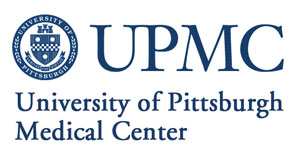Assessment of Augmented Reality in Minimally Invasive Surgery
| Status: | Not yet recruiting |
|---|---|
| Healthy: | No |
| Age Range: | 18 - Any |
| Updated: | 2/28/2019 |
| Start Date: | April 1, 2019 |
| End Date: | March 1, 2020 |
| Contact: | Raj Shekhar, PhD |
| Email: | raj@igitechnologies.com |
| Phone: | 202-476-1201 |
Clinical Translation of Augmented Reality Visualization for Laparoscopic Surgery
The objective of this study is to test the technical feasibility of LapAR visualization
system for guiding laparoscopic surgeries and to gather clinical feedback on the use of this
tool.
system for guiding laparoscopic surgeries and to gather clinical feedback on the use of this
tool.
Surgeons use real-time video generated by a laparoscope to visualize the operative field when
performing laparoscopic procedures. An inability to see beneath organ surfaces is a
limitation of the current visualization technology. Surgeons additionally use laparoscopic
ultrasound to see beneath organ surfaces, but also need to mentally correlate the ultrasound
image with the video of the operative field. This process is difficult, subjective, and
variable with expertise, and discourages the use of ultrasound.
The investigators have developed a method to combine live laparoscopic video and laparoscopic
ultrasound images to present fused multimodality images on a single display, eliminating the
need for mental image correlation. Specifically, the image fusion method, called laparoscopic
augmented reality (LapAR), augments the laparoscopic video with ultrasound data when required
by surgeons. This study is designed to test this minimal-risk capability in patients referred
for relevant laparoscopic procedures.
performing laparoscopic procedures. An inability to see beneath organ surfaces is a
limitation of the current visualization technology. Surgeons additionally use laparoscopic
ultrasound to see beneath organ surfaces, but also need to mentally correlate the ultrasound
image with the video of the operative field. This process is difficult, subjective, and
variable with expertise, and discourages the use of ultrasound.
The investigators have developed a method to combine live laparoscopic video and laparoscopic
ultrasound images to present fused multimodality images on a single display, eliminating the
need for mental image correlation. Specifically, the image fusion method, called laparoscopic
augmented reality (LapAR), augments the laparoscopic video with ultrasound data when required
by surgeons. This study is designed to test this minimal-risk capability in patients referred
for relevant laparoscopic procedures.
Inclusion Criteria:
1. Patient is referred for either laparoscopic partial hepatectomy for tumor removal or
laparoscopic ablation of liver cancer;
2. Patient must be at least 18 years old;
3. Patient provides written consent;
4. Patient is considered a suitable candidate based on tumor location for using the AR
system.
Exclusion Criteria:
Patients with pacemaker or any other ICD(intra-cardiac device) which may interfere with
electromagnetic tracking
We found this trial at
1
site
200 Lothrop St
Pittsburgh, Pennsylvania 15213
Pittsburgh, Pennsylvania 15213

Phone: 412-692-2001
University of Pittsburgh Medical Center UPMC is one of the leading nonprofit health systems in...
Click here to add this to my saved trials